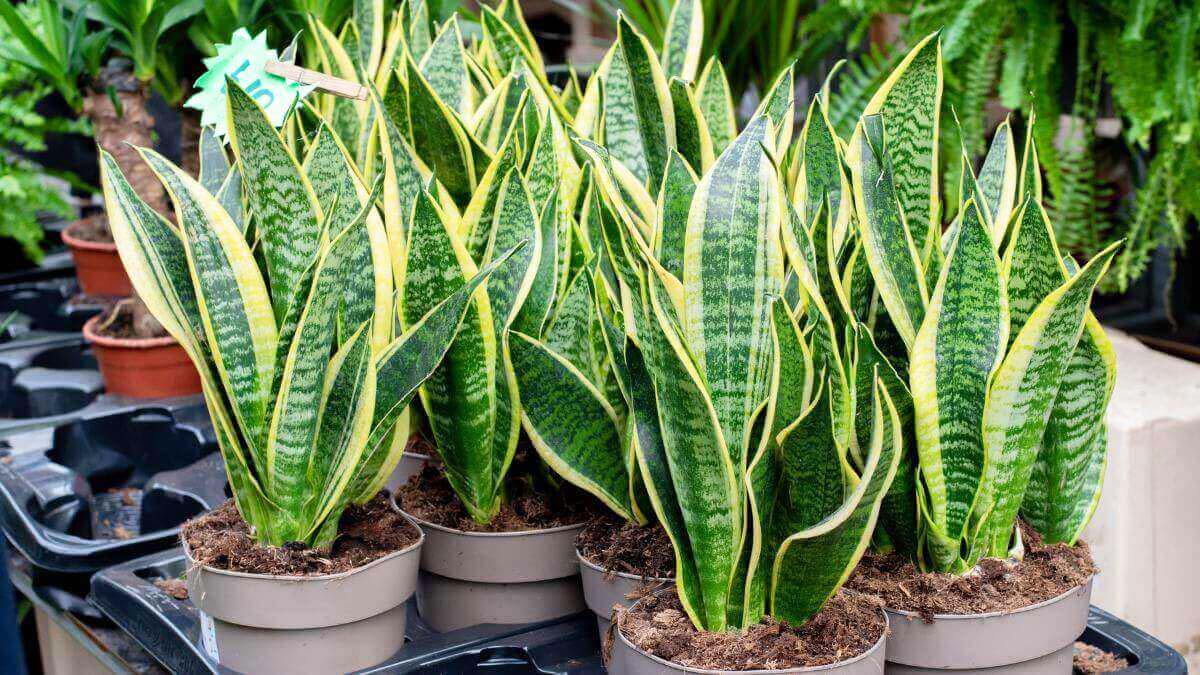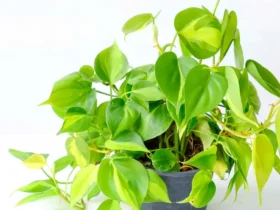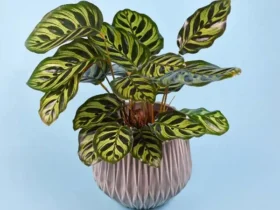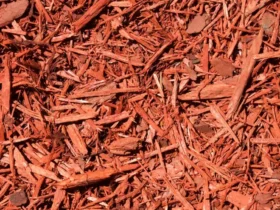Types of Snake Plants include the Sansevieria Trifasciata ‘Laurentii’, Sansevieria Cylindrica, and Sansevieria Ehrenbergii. The Sansevieria Trifasciata, commonly known as Mother-in-Law’s Tongue, showcases upright, green-yellow leaves.
Snake Plants, scientifically known as Sansevieria, are renowned for their air-purifying abilities and low maintenance nature. These hardy plants boast a variety of species, each with distinct leaf patterns and growth habits. Gardeners treasure them for indoor settings due to their resilience and adaptability to various light conditions.
Cultivars range from the compact Sansevieria Kirkii to the tall and striking Sansevieria Trifasciata. Their architectural structure and ability to thrive with minimal care make them a favorite among novices and experienced plant enthusiasts alike. With their growing popularity, they are a top choice for anyone seeking to add a touch of greenery with functional benefits to their space.
Introduction To Snake Plants: Nature’s Air Purifiers
Snake plants, also known as Sansevieria, are more than just an attractive greenery to adorn your space. These hardy plants have an exceptional ability to purify the air, making them a popular choice for indoor gardeners and those interested in cleaner air inside their homes.
Understanding Snake Plants: A Brief Overview
Snake plants come in a variety of shapes and sizes, each with strappy, upright leaves that sometimes have yellow or white edges. They’re remarkably tolerant of low light and irregular watering, which contributes to their low-maintenance reputation. Below is a quick rundown of the common types of snake plants you might encounter:
- Sansevieria trifasciata ‘Laurentii’: Features yellow-edged leaves.
- Sansevieria cylindrica: Has round, spear-like foliage.
- Sansevieria trifasciata ‘Hahnii’: Grows in a bird’s nest shape.
The Benefits Of Having Snake Plants In Your Home

Snake plants are much more than visually pleasing. They offer a multitude of health and environmental benefits. Some of these include:
| Benefit | Description |
| Air Purification | Snake plants can absorb toxins and release oxygen, especially at night. |
| Low Maintenance | They require minimal water and can thrive in a range of light conditions. |
| Humidity Control | They help maintain healthy humidity levels, aiding in respiratory and skin health. |
Classical Charm: The Sansevieria Trifasciata ‘laurentii’
Among the stars of indoor greenery stands the Sansevieria Trifasciata ‘Laurentii’, also known as the Variegated Snake Plant. Its upright, sword-like leaves and striking yellow borders earn it a top spot in homes and offices. The ‘Laurentii’ not only brings beauty but also purifies the air. Let’s explore the features that make this plant a timeless favorite.
Characteristic Features Of ‘laurentii’
- Tall, Pointed Leaves: Leaves grow vertically, reaching up to four feet.
- Bold Yellow Edges: Each leaf is framed with vibrant yellow margins.
- Leaf Pattern: Grey-green bands decorate the inside of the foliage.
- Easy to Propagate: Leaf cuttings root readily in either water or soil.
- Air Purification: The ‘Laurentii’ filters indoor air, removing toxins.
Care Tips For The Sansevieria Trifasciata ‘laurentii’
The ‘Laurentii’ thrives with minimal fuss. Follow these care tips for a happy, healthy plant.
Light – Tolerates low light but prefers bright, indirect sunlight.
Water – Water sparingly. Let soil dry between waterings.
Temperature – Ideal temperatures range from 60-75°F (15-24°C).
Humidity – Low humidity suits this plant best.
Soil – Use a well-draining cactus or succulent mix.
Fertilizer – Feed with a balanced houseplant fertilizer during the growing season.
Repotting – Repot every 2-3 years or when roots outgrow the pot.
With these care tips, your Sansevieria Trifasciata ‘Laurentii‘ will add a touch of classical charm to any space it graces.
Compact Beauty: Sansevieria Kirkii ‘star Sansevieria’
The Sansevieria Kirkii ‘Star Sansevieria’ exudes charm through its compact form. This versatile plant fits almost anywhere, from small desks to cozy corners. Its rosette pattern and silver-green leaves with dark spots make it a visual delight. This variant grows slower than its towering cousins but shines in terms of ease and versatility. Perfect for both beginners and avid collectors, the ‘Star Sansevieria’ stands out in any plant ensemble.
Identifying ‘star Sansevieria’
- Look for stout, pointy leaves.
- Notice the silvery-green color with mottled patterns.
- Each leaf grows in a rosette spiraling outwards.

Unique features of this plant include:
| Characteristic | Description |
| Leaf Texture | Rough with a leathery feel |
| Leaf Shape | Cylindrical, tapering to a point |
| Leaf Pattern | Horizontal lines with dark, round spots |
| Size | Compact, ideal for small spaces |
Maintaining Your Sansevieria Kirkii ‘star Sansevieria’
Keep your ‘Star Sansevieria‘ thriving with simple care tips.
- Water sparingly, let the soil dry out between waterings.
- Place in indirect light, avoid harsh sunlight.
- Use well-draining soil to prevent root rot.
Foster growth with:
- Monthly fertilizing during spring and summer.
- Repotting only when necessary.
- Cleaning leaves to enhance photosynthesis.
Remember, less is more with the resilient ‘Star Sansevieria’. It thrives with minimal attention, making it a perfect match for busy lifestyles.
The Architectural Marvel: Sansevieria Cylindrica ‘african Spear’
Sansevieria Cylindrica, also known as the ‘African Spear’, stands out in the plant world. Its tubular leaves soar skywards, creating a striking visual. This species brings an exotic and modern touch to any indoor space. It’s not just beautiful; it’s sturdy and easy to care for, making it a favorite among novices and experts alike.
A Guide To Sansevieria Cylindrica’s Unique Structure
The ‘African Spear’ boasts a distinctive design unlike any other. Long, cylindrical leaves grow vertically, resembling spears reaching for the sky. They can grow several feet high, offering a minimalist but powerful aesthetic.
- Stiff, upright leaves: Perfect for creating structural interest in your space.
- Banded pattern: Adds texture and depth.
- Green to gray hues: Complements a variety of decor styles.
Optimal Conditions For Your ‘african Spear’
Thriving in well-draining soil and enjoying bright, indirect light, the ‘African Spear’ is low-maintenance.
| Condition | Requirement |
| Light | Bright, indirect |
| Water | Every 2-3 weeks |
| Temperature | 60-80°F (15-27°C) |
| Soil | Free-draining |
Remember to let the soil dry between waterings. Overwatering can harm your ‘African Spear’.

Minimalist’s Delight: Sansevieria ‘moonshine’
Sansevieria ‘Moonshine’ stands as a beacon for simplicity and elegance. Its silvery-green leaves bring a calm, modern feel to any space. Perfect for minimalist aesthetics, ‘Moonshine’ thrives with little fuss. This type of snake plant, sometimes called the ‘Silver Snake Plant’, captivates plant lovers with its unique foliage. It’s a top choice for those who appreciate understated beauty in their home or office.
The Allure Of Sansevieria ‘moonshine’
The ‘Moonshine’ variant of Sansevieria is notably attractive for several reasons. Its leaves, thicker and wider than many of its cousins, boast a luminous, pale green hue. The subtle colors blend effortlessly into minimalist decor, making it a popular choice. Its ability to purify air and tolerate low light gives ‘Moonshine’ its allure. This plant not only enhances the living space but also contributes to a healthier indoor environment.
How To Foster A Healthy ‘moonshine’ Plant
- Light: While adaptable, ‘Moonshine’ prefers indirect light. Avoid direct sunlight to prevent leaf scorching.
- Water: Let the soil dry between waterings. Overwatering can lead to root rot.
- Soil: Use a well-draining potting mix. A blend of potting soil with sand or perlite works well.
- Temperature: Keep at room temperature, away from drafts and cold windows.
- Fertilizer: Feed with a balanced, water-soluble fertilizer every three weeks during the growing season.
- Cleaning: Dust leaves with a damp cloth to keep the plant’s pores open.
Following these simple care guidelines will help your ‘Moonshine’ plant grow strong and vibrant. With minimal care, it provides maximum style—a true minimalist’s delight.
Petite And Striking: Sansevieria Ehrenbergii ‘samurai Dwarf’
Snake plants offer a variety of shapes and sizes for plant lovers. Among them, the Sansevieria Ehrenbergii ‘Samurai Dwarf‘ stands out. This unique plant boasts a compact form with leaves that resemble swords. Let’s dive into the world of this petite and striking houseplant.
Discovering The ‘samurai Dwarf’
This sansevieria variant captures attention with its hardy nature and easy care. The ‘Samurai Dwarf’ grows in a rosette pattern. Its leaves are thick, dark green, and have sharp points. This plant suits small spaces, making it ideal for tabletops and shelves. Despite its size, it adds a powerful touch of green to any room.
Growing The Sansevieria Ehrenbergii ‘samurai Dwarf’
To grow a ‘Samurai Dwarf’, consider the following tips:
- Light: Prefers bright, indirect sunlight. Tolerates low light.
- Water: Water sparingly. Allow soil to dry between watering.
- Soil: Well-draining potting mix. Cactus or succulent mix is ideal.
- Temperature: Thrives at room temperature. Avoid cold drafts.
- Feeding: Fertilize with a balanced, half-strength solution during the growing season.
Remember, over-watering is the main enemy of this sansevieria. With proper care, the ‘Samurai Dwarf’ can be a long-lasting and low-maintenance companion.

The Unusual Rosettes: Sansevieria Hahnii ‘bird’s Nest’
The Unusual Rosettes: Sansevieria Hahnii ‘Bird’s Nest‘ stands out among snake plants. This variety forms a nest-like structure, giving it a distinctive appearance. Its compact size and unique shape make it a favorite among plant enthusiasts.
Identifying The ‘bird’s Nest’ Snake Plant
Sansevieria Hahnii, commonly known as the ‘Bird’s Nest’, is easy to spot:
- Short leaves: The leaves grow outward, creating a rosette pattern.
- Green with stripes: Leaves have varied green shades and horizontal stripes.
- Compact size: It grows up to 6 inches tall, perfect for small spaces.
Caring For Your ‘bird’s Nest’ Snake Plant
Keep your ‘Bird’s Nest’ healthy with simple steps:
| Factor | Care Tips |
| Light | Thrives in low to bright, indirect sunlight. |
| Water | Water sparingly, allowing soil to dry between watering’s. |
| Soil | Well-draining potting mix is best. |
| Temperature | Ideal temperatures range from 55-85°F (13-29°C). |
| Fertilizer | Feed with a balanced fertilizer during growing season. |
Caring For Your Snake Plant Collection
Snake Plants, known for their resilience, add a striking touch to any room. They come in various types, each with sword-like foliage and unique patterns. Caring for your snake plant collection ensures they continue to thrive and brighten up your indoor space. Let’s delve into the essentials of snake plant care.
General Care Tips For Snake Plants
Here are key points to remember for your snake plants:
- Light: They prefer indirect sunlight but can tolerate lower light.
- Water: Water sparingly. Allow soil to dry between waterings.
- Soil: Use a well-draining potting mix to prevent root rot.
- Temperature: Keep your snake plants in warm conditions, avoiding drafts.
- Fertilizer: Feed with a mild cactus fertilizer during growing season.
- Potting: Repot every 2-3 years or when roots become crowded.
Troubleshooting Common Issues In Snake Plants
Even the hardy snake plant can face issues. Here’s a quick guide to solving common problems:
| Problem | Cause | Solution |
| Yellow Leaves | Overwatering | Reduce watering, ensure drainage |
| Wilting | Poor light, root rot | Move to brighter area, check roots and repot if necessary |
| Brown Tips | Low humidity | Increase humidity with a pebble tray or humidifier |
| Slow Growth | Low light, nutrients | Provide brighter light, apply balanced fertilizer |
Even the hardy snake plant can face issues. Here’s a quick guide to solving common problems:Keep an eye on your snake plants and they will show you what they need through their leaves and growth patterns. Regular care and quick response to any issues will keep your snake plants happy and healthy for years to come.

Frequently Asked Questions On Types Of Snake Plants
Which Snake Plant Is Best For Home?
The Sansevieria trifasciata, commonly known as the Snake Plant or Mother-in-Law’s Tongue, is ideal for homes due to its air-purifying qualities and low maintenance needs.
What Is The Most Exotic Snake Plant?
The Sansevieria trifasciata ‘Futura Robusta’, often called the Shark Fin Snake Plant, is among the most exotic snake plants due to its unique shape and lush gray-green foliage.
Are There Different Kinds of Snake Plants?
Yes, there are various types of snake plants, including Sansevieria trifasciata, Sansevieria cylindrica, and Sansevieria trifasciata ‘Laurentii’, each with distinct leaf patterns and shapes.
How Do I Identify A Snake Plant?
To identify a snake plant, look for stiff, upright leaves with variegated patterns in green, silver, or gold. The leaves are typically broad at the base and taper to a point.
Conclusion
Exploring the diverse family of snake plants offers a green thumb adventure perfect for enthusiasts and beginners alike. Embrace the resilience and air-purifying qualities of these hardy varieties. Your indoor garden awaits – pick the type that speaks to you and start cultivating a touch of nature’s wonder at home.




